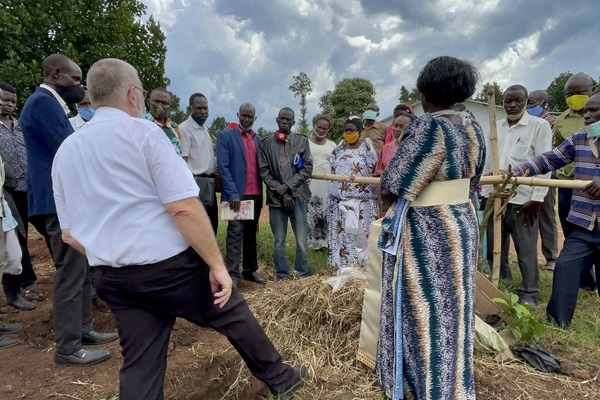Education
Education is a purposeful activity directed at achieving certain aims, such as transmitting knowledge or fostering skills and character traits.
Read MoreMalnutrition is often lost in discussions around the subject of hunger, especially in the context of the discourse to "end world hunger," or to "feed the world." These blurred definitions help perpetuate the inadequate response to malnutrition. It is crucial to distinguish between malnutrition and hunger, as malnutrition requires responses that go beyond food aid.
Hunger is usually taken to mean a deficiency in caloric intake - any person whose daily diet gives fewer than the defined minimum of 2,100 kcal is considered suffering from hunger, or undernourished. The typical response to hunger is food aid that supplements a person's daily caloric intake
Malnutrition however is not merely the result of too little food. It is a pathology caused principally by a lack of essential nutrients. Most food aid is an inadequate response to malnutrition as it either delivers insufficient amounts of essential nutrients or delivers them in a way that they are destroyed by cooking or not taken up properly by the body.
Malnutrition affects first and foremost children under the age of two, but young children less than five years of age, adolescents, pregnant or lactating mothers, the elderly and the chronically ill (including those with HIV/AIDS and TB) are also vulnerable. Children are especially susceptible to growth failure when foods have to be introduced to complement breastfeeding in the first and second years of life. Wasting and other forms of acute malnutrition often appear among children in seasonal cycles, especially during the 'hunger gap' period between harvests.
Attending to a malnourished child
One of our malnourished patient
When children suffer from acute malnutrition, their immune systems are so impaired that the risks of mortality are greatly increased. A banal children's disease such as a respiratory infection or gastro-enteritis can very quickly led to complications in a malnourished child and the risks of death are high.
Malnutrition is defined in three ways: by a weight for height indicator with a reference population, or mid-upper arm circumference (MUAC), or by the presence of oedema (a bloated appearance to the feet and face).
If dietary deficiencies are persistent, children will stop growing and become stunted (low height for one's age). This is referred to as chronic malnutrition. If they experience weight loss or 'wasting' (low weight for one's height), they are described as suffering from acute malnutrition. Both of these presentations of malnutrition may be further classified as moderate or severe.
Severe acute malnutrition includes two main clinical forms - severe wasting (called marasmus) and nutritional oedema (known as kwashiorkor). It is the clinical analysis that determines if treatment will be in hospital or with therapeutic RUF at home. NAFAU experience has been that most children do not have complications and can therefore follow therapeutic RUF treatment at home. Severe acute malnutrition has a case fatality rate of up to 21% without effective intervention. But any child with malnutrition is at an increased risk of developing complications leading to severe illness and death.
Malnutrition is associated with half of all deaths in children under the age of five each year. The risk of death is particularly high for children with severe acute malnutrition, up to 20 times higher than a healthy child.

Education is a purposeful activity directed at achieving certain aims, such as transmitting knowledge or fostering skills and character traits.
Read More
Access to clean water, basic toilets, and good hygiene practices not only keeps people thriving, but also gives them a healthier start in life.
Read More
Sustainably produced coffee is grown in a way that conserves nature and provides a good livelihood for the people who grow and process it.
Read More